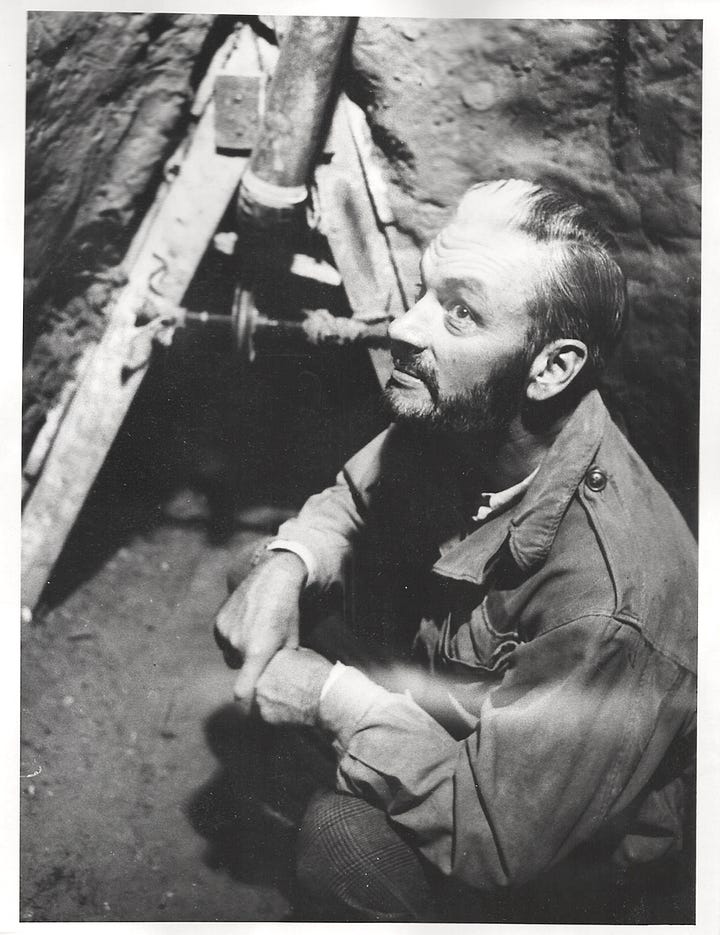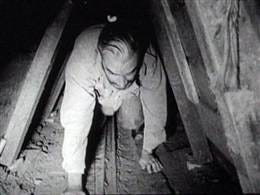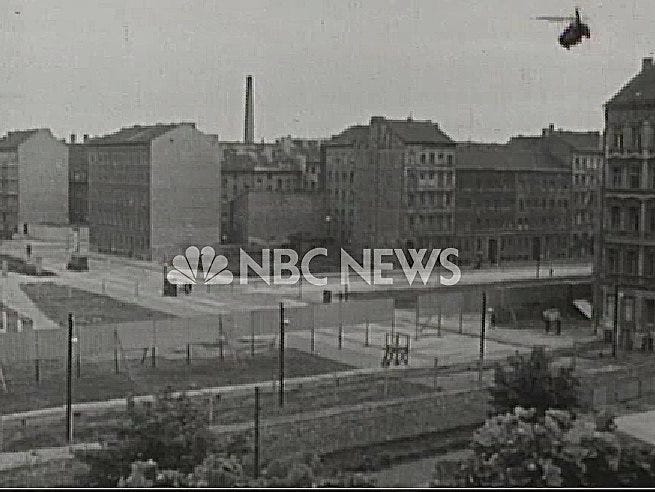When 29 Escaped in Tunnel Under Berlin Wall
61 years ago today: NBC in a panic over historic footage. JFK would later try to suppress it.
Greg Mitchell is the author of a dozen books and now writer/director of award-winning films. He was also the longtime executive editor of the legendary Crawdaddy. And see his popular new newsletter devoted to The Bomb in the wake of “Oppenheimer.” His two newsletters remain free when you subscribe.
»»>The following is adapted from my bestselling 2016 book, “The Tunnels: Escapes Under the Berlin Wall—and the Film the JFK White House Tried to Kill” (Crown).
At the NBC office high above Bernauer Strasse overlooking the Wall and East Berlin, Reuven Frank was growing frantic. All day he and his editor had been watching the remarkable raw footage shot weeks earlier by his camera crew. He couldn’t have been more excited, or anxious. His Berlin correspondent, Piers Anderton, had told him the escape mission, set for late-afternoon on this day, September 14, 1962, would likely be over by 8 o’clock. Since then, not a word.
Frank, the producer on the top-secret project--which was funded by NBC despite strict warnings from the State Department due to Cold War tensions with the Soviets in the divided city--had just flown from 30 Rock in New York City to Berlin when alerted to the impending tunnel escape. He had expected the brothers Peter and Klaus Dehmel to arrive at the office by nine with their footage but that had not happened. He ordered an expensive Chinese meal delivered, but was too jazzed to eat it. Had the escape under the heavily-patroled Wall been compromised as it had been at Kiefholz Strasse a month earlier, which led to the arrest of dozens of would-be refugees and couriers, thwarting Daniel Schorr's scoop for CBS? Finally he decided to go out and take a look around.
Not wishing to draw attention, he requested a nondescript car and asked one of his bureau chief's assistants to drive him past the tunnel entrance/now exit in the West--a swizzle stick factory--without slowing down. He didn’t see any unusual police activity in the West nor, peering over the Wall, in the East, where the mass escape, via a basement in a tenement two blocks from the Wall and death strip (see photo below), might have already happened, or been foiled. If there had been a major bust, there would have been some sort of feverish activity or flashing lights, he assured himself, as he returned to the office, to wait some more.
At two a.m. that night, the Dehmels arrived. They had refused to leave the basement until the mission was over, which had meant waiting, like some of the diggers, for the final party of refugees to crawl on all fours through the muddy tunnel rapidly filling with water: three young women with four children in tow. That brought the total number of escapees that night to nearly thirty, with hopes for more to arrive the following day, despite the extremely hazardous condition of the 400-foot cavern. Then the Dehmels had hauled their precious reels of film stock to a secure lab. Reuven Frank would have to wait until later that day to screen what they had captured, but the Dehmels’ eyewitness account made it sound like a phenomenal, heroic success—and, incidentally, tremendous television.
The following morning, in her Bonn apartment, Birgitta Anderton picked it up a ringing phone to find her husband on the line.
“We got them all out,” the NBC correspondent announced.
“What are you talking about?” she asked.
“Oh,” he replied jovially, “I forgot to tell you—we’ve been shooting a documentary in Berlin about East Germans fleeing to the West in a tunnel. And we got them all out.” The newsman’s use of “we” was telling. He didn't tell her that he planned to present her with a memento when they next met--a child's doll, now covered in dirt, left in the tunnel during the escape. (Anderton below.)


While Anderton and most of the tunnelers and escapees were trying to wind down on the morning after, Reuven Frank was gearing up for his own mission, which essentially had just begun. Around noon at NBC’s Berlin bureau, the Dehmels’ stark, silent, black and white footage from the night before had come back from the lab and was about to be projected onto the only “screen” at hand: a large sheet of stained white cardboard. Frank wondered if it could live up to the Dehmels’ synopsis of ten hours earlier.
He didn’t have to wait long to find out. Just a few minutes in, the screen showed Eveline Schmidt, whose plight had inspired the tunnel organizers to move ahead with their outrageously risky project back in March, climbing the ladder, with Klaus Dehmel, of all people, rushing forward to help her. Despite the weak lighting, the image quality was technically adequate, the tension palpable, the drama off the charts. Soon Eveline's baby, husband and mother-in-law followed her up the ladder to freedom. These scenes would require little or no narration, Frank recognized.
On and on it went, displaying the stoic arrival of the more than two dozen escapees and their emotional reactions afterward. Finally, the last woman and baby arrived, ending in a heart-rending close-up of one of the tunnelers on the ladder holding his son for the first time.
Reuven Frank was floored. He rang his boss, NBC's vice president for news, Bill McAndrew, back in New York to tell him to forget the plan for a sixty-minute special on a wide range of Berlin escape efforts—he would need ninety minutes just to tell the tale of this one tunnel. He had no idea how to assemble something powerful and coherent from the 12,000 feet of footage, shot over many weeks in short bursts, with no audio and a cast of characters unknown to American audiences. The end result, however, was no longer in doubt. Frank just had to start editing.
He couldn’t imagine that, for NBC, the “easy” part was over. Soon the Kennedy White House and State Department would attempt to suppress what he felt certain would be a landmark documentary.
Eveline climbing out of the tunnel, below, and then with my wife Barbara in Berlin in 2017.
Trailer for my book The Tunnels:







Awesome article! Bravo 🙌🏼